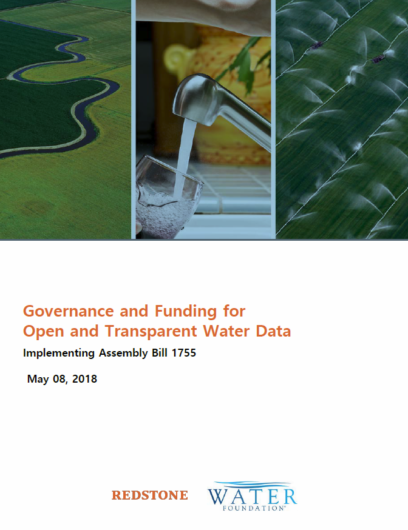Building California’s water data infrastructure
California is facing water challenges driven by climate change, population growth, and delayed investments in green and gray infrastructure. As the adage goes, you can’t manage what you can’t measure, and California lacks the integrated data necessary to manage its way through these pressing challenges. The passage of Assembly Bill 1755 (Dodd, 2016) opened the door for California to change this. It mandated that state agencies “create, operate, and maintain a statewide integrated water data platform” to integrate water and ecological data from across state, and federal databases, and to provide data on completed water transfers and exchanges (Dodd, 2016).
A coalition will drive success
If successful, this bill will create the foundation for California’s water data and information infrastructure for generations to come, but this success relies on the cooperation of agencies and entities across local, state, and federal government, alongside private stakeholders. In the attached e-publication and report, we lay out a vision for a public-private coalition to facilitate this coordination and support the success of California’s water data infrastructure.
About this report
Together with the Water Foundation, we explored sustainable governance and funding structures for the implementation of AB 1755 in the attached report. California’s efforts build on the blueprint laid out in the Aspen Institute’s Report on Sharing and Integrating Water Data for Sustainability and provides a powerful example for other states looking to leverage the power of data to meet the challenge of managing water resources for growing populations in an increasingly variable climate.
Printables
We’ve created several print-friendly two-pagers to provide overviews of the proposed governance and funding structures at a glance. You can access them via the links below. If you don’t see something that you feel might help provide more clarity on our process and recommendations, please reach out.
